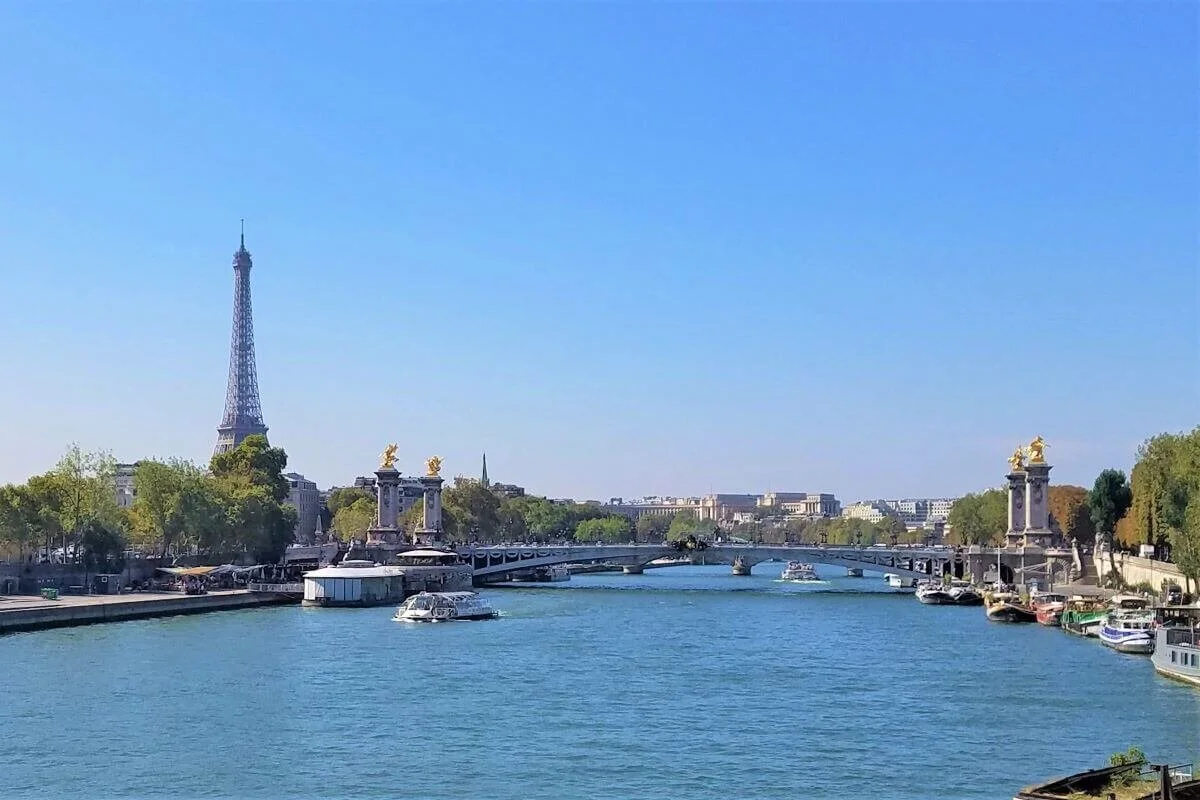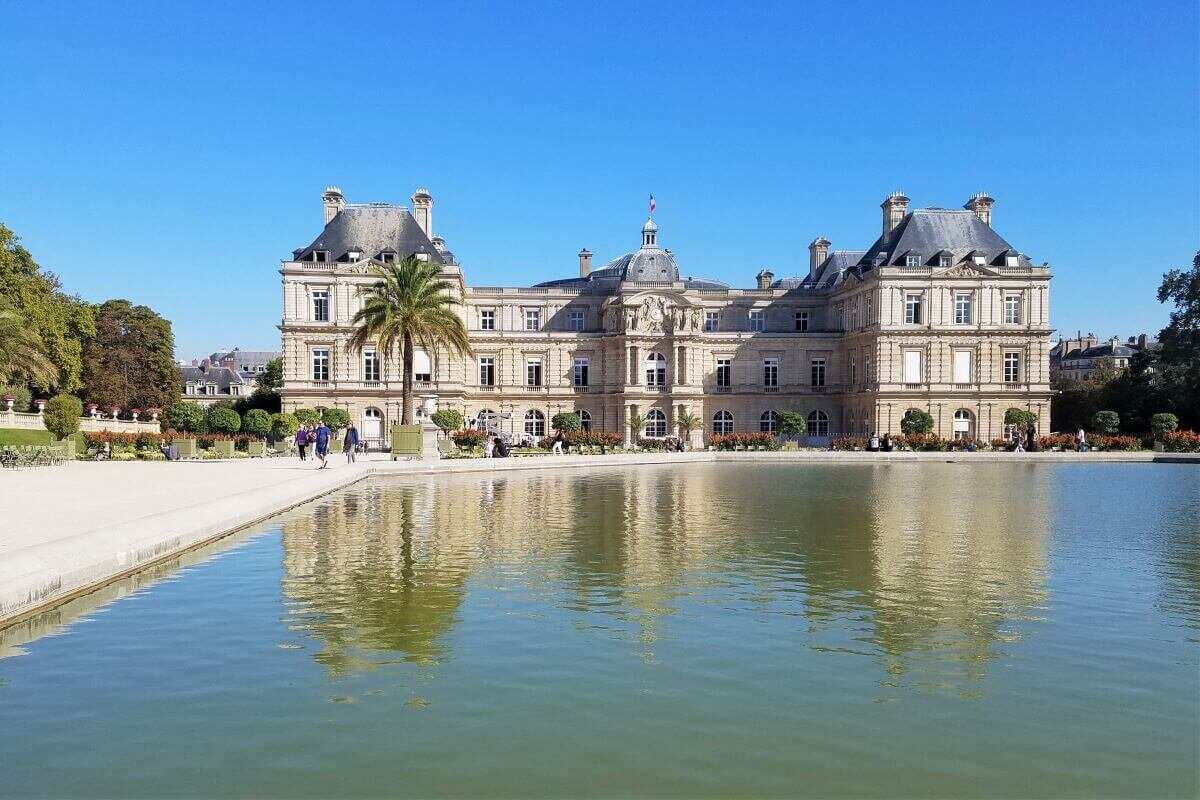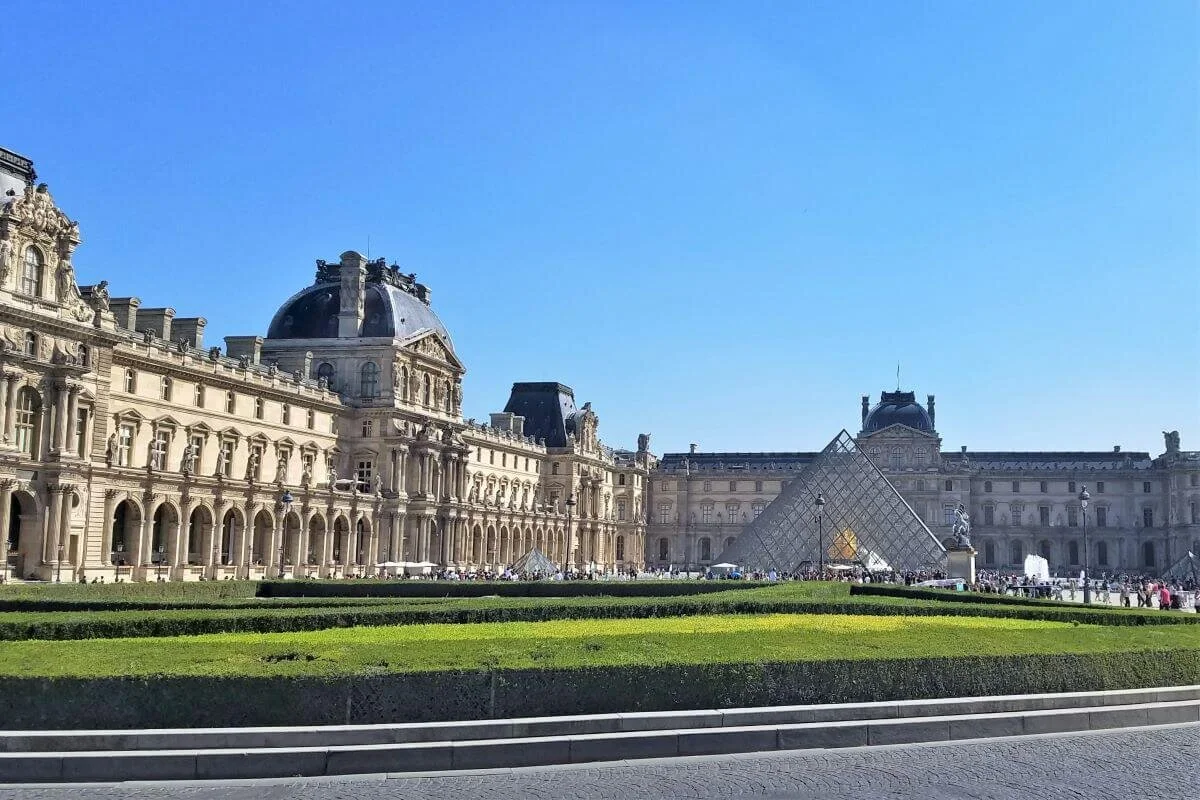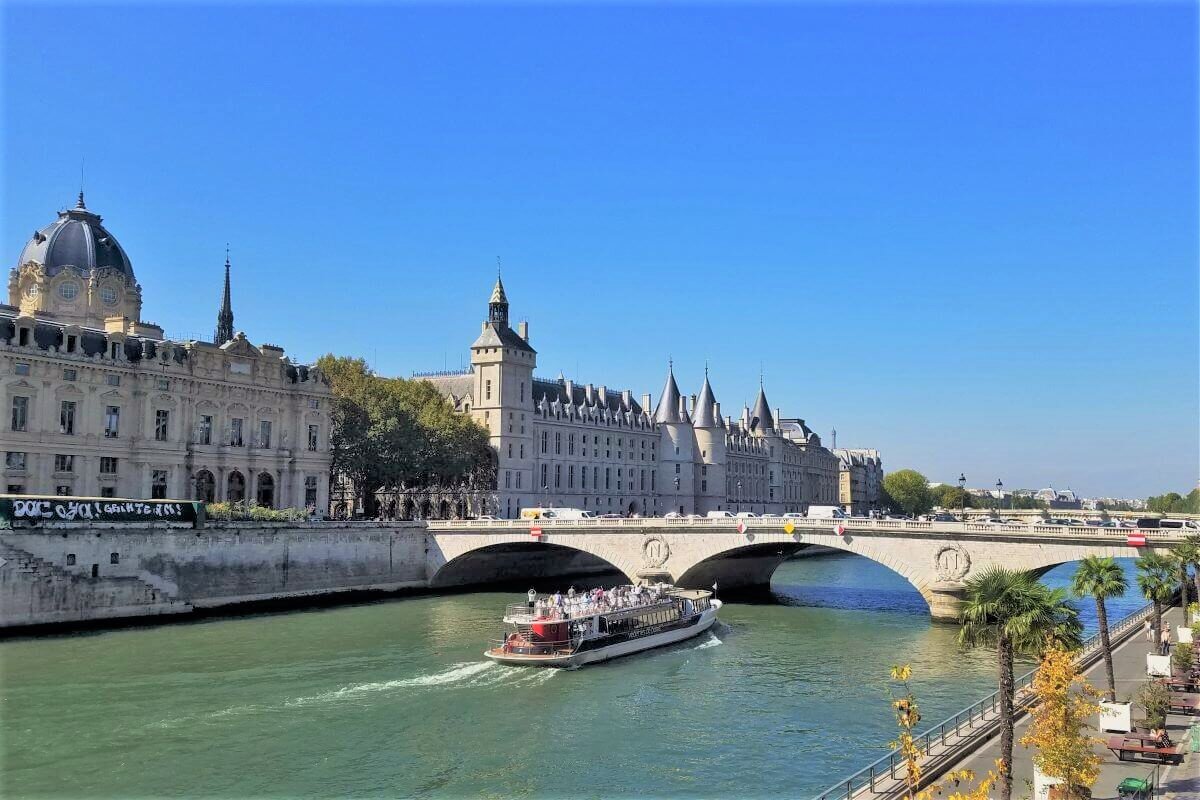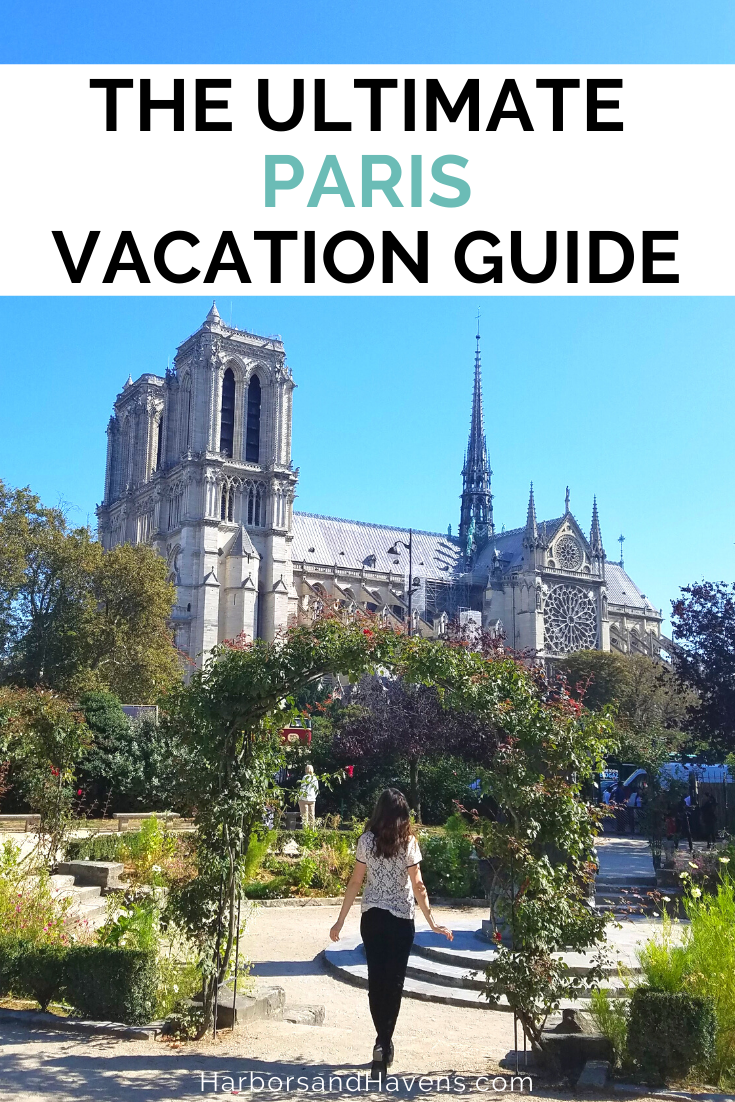This is the Best 4 Days in Paris Itinerary for Your First Time
This 4 days in Paris itinerary packs in the best monuments, museums, cathedrals and cafes the French city is famous for.
Visiting Paris for the first time is like stepping into a story. You’ve seen the streets and cafes in movies, been charmed by the romance in books, and dreamed about the twinkling lights on the Eiffel Tower. So when the time comes to finally experience the city in person, you want to get it right.
That’s where this 4 days in Paris itinerary comes in. I’ve visited the city a few times now, even guiding family around for their first trip, too.
There’s so much to see and do in the French capital that it’s hard to know where to start. Figuring out how to divvy up your time depends a lot on what you enjoy — museum hopping, shopping, historic sights, eating, photography. I’ve packed this 4 day Paris itinerary pretty full, giving you space to cross a few things off and focus on your favorites.
The top things to do in Paris below are grouped by neighborhood so that you won’t waste as much time traveling from place to place. Paris is divided into 20 numbered sections called arrondissements that start from the center and spiral outward. So when you see the 3rd, 9th, and so on mentioned, I’m talking about the arrondissements.
The attractions from this guide are all pinned on the Paris map below so you can see what’s close by. Keep reading for a dreamy and action-packed Paris 4 day itinerary and scroll to the bottom for tips like where to stay, what to pack, how to get around, and when to visit Paris.
Paris Attractions Pass
Check out the Paris Go City Pass for the most up-to-date offers.
The Ultimate 4 Days in Paris Itinerary and Map
This Paris 4 day itinerary is colored-coded on the map below so you can see which destinations are close to each other. Click on the Paris map to save the attractions to your own Paris bucket list.
Day 1 — Eiffel Tower and Sightseeing in the 6th and 7th
Most of us can’t wait to see the Eiffel Tower when we arrive in the city, so I’m starting this 4 days Paris itinerary with the Iron Lady. Since this will be a day time visit, I’ve also included a spot at the end of the trip to see it again at night as a final send-off.
I actually prefer going up the tower in the late afternoon for sunset, so today can just be a daytime photo stop if you want to do that as well.
After leaving the Eiffel Tower, walk through the 7th arrondissement for highlights like Musee d’Orsay, the sculpture garden at Musee Rodin, and the Les Invalides army museums where Napoleon is buried. You’ll only have time to tour one, and I’ve recommended Musee d’Orsay below.
Continuing on into the 6th, you’ll discover some fun places to stop for an afternoon coffee in Saint-Germain-des-Pres or a rest in Luxembourg Garden before capping off the day with twilight city views from Montparnasse Tower.
Eiffel Tower
Built by Gustave Eiffel for the 1889 World’s Fair, the Eiffel Tower was never intended to be a permanent fixture and was almost destroyed in World War II. Today, it’s one of the most famous structures in the world and draws millions of tourists yearly.
At 1,063 feet, the tower has three levels of observation decks open to the public, accessed by lifts and by steps as far as the 2nd floor (674 of them). Lines can get outrageously long, so reserve a timed ticket ahead of your visit.
Highlights on the first level include a glass floor to walk over and open-air terraces. The second floor features a macaroon bar and a Michelin star restaurant as well as incredible views overlooking the city. At 905 feet, the top public space has open-air and covered levels with geographic markers showing the distance and direction of other cities around the world.
Trocadero and Champ de Mars
For the best views of the Eiffel Tower, visit Jardins du Trocadero or Champ de Mars parks on either side. The first is on the opposite side of the Seine from the Eiffel, surrounded by a museum complex and with fountains running down the center. From this approach, you can get the famous view of the tower by a carousel.
The Champ de Mars park is in the 7th and full of tree-shaded walking paths and green lawns perfect for picnics with an Eiffel Tower view.
Musee d’Orsay
Musee d’Orsay is one of the top recommended art museums in the city, perfect for the start of this Paris 4 day itinerary. The collection here includes a wealth of Impressionist paintings from famous French artists like Monet, Renoir and Pissarro. Van Gogh’s “Portrait of the Artist” and “Starry Night Over the Rhone” are also displayed at d’Orsay.
The museum is housed in a Beaux-Arts style train station that was built for the 1900 world's fair. It’s located on the left bank of the river across from the Louvre in the 7th arrondissement, less than 2 miles from the Eiffel Tower.
Saint-Germain-des-Pres
Saint-Germain-des-Pres in the 6th arrondissement is a cultural hub made famous by the great writers and artists who hung out here at the turn of the 19th to 20th century. The district surrounds the wide Saint-Germain Boulevard, where you’ll find historic cafes like Les Deux Magots and Cafe de Flore, both famed for their early regulars like Ernest Hemingway, Pablo Picasso and Simone de Beauvoir.
Wander the neighborhood to shop for vintage souvenirs, or pause at a sidewalk table for coffee, pastries and people-watching.
Luxembourg Garden
Jardin du Luxembourg sits on about 55 acres in the 6th and packs in a palace, flower gardens, athletic fields, a museum and tons of historic statues. It’s the perfect spot to sit and sip a coffee by the pond in front of Luxembourg Palace, or to stroll along crisscrossing walking paths admiring monuments like the Marie De Medicis Fountain. Kids will love floating little boats on the pond and you can rent them from a stand right by it.
Montparnasse Tower
If you just can’t wait to get another look at the Eiffel Tower, head over to Montparnasse Tower and the city’s highest rooftop terrace. The observation deck is more than 650-feet high and has spectacular Paris skyline views. Arrive just before sunset for a spectacular sky behind the Iron Lady and stay to watch the twinkling light show on the Eiffel Tower when it gets dark.
Day 2 — Gothic Churches and Historic Neighborhoods in the 4th and 5th
Carve out time in the morning for one or both of the churches below before hopping from right to left bank to explore two intriguing historic neighborhoods. You can take as much time wandering around Le Marais and the Latin Quarter as you like, and both have great places to stop for lunch.
If you didn’t have time for everything in the 6th arrondissement yesterday, it’s also very close to the Latin Quarter.
Cathédrale Notre-Dame de Paris
Notre-Dame is one of the most famous and stunning landmarks of Paris. The 13th-century cathedral is located on a small island in the middle of the Seine and center of the city.
Before a devastating fire closed it to the public, visitors could walk inside the nave to admire the organ, stained glass and works of art. For a small fee, you could also climb up to the two towers and see the decorative gargoyles and huge church bells up close.
For now, you’ll have to admire the Notre-Dame from the outside. One of my favorite views is from the little park at Square Rene Viviani just across the Seine in the Latin Quarter to the south of the building.
Sainte-Chapelle
You haven’t seen stained glass until you’ve stood in the sanctuary at Sainte-Chapelle watching the sun stream in through 1,113 colorful panes. The Gothic church was built in the 13th century and features 15 windows some 50-feet tall displaying hundreds of Bible scenes.
It’s located on the same island on the Seine as Notre-Dame, and you’ll need to purchase a ticket to enter.
Le Marais
For a taste of traditional Paris, head to Le Marais in the 3rd and 4th arrondissement. The cobbled streets of this historic district are lined with 17th-century mansions where French aristocrats and authors like Victor Hugo and Colette once lived. I
t’s the perfect zone to wander around indulging in your interests, whether that’s gallery hopping (the Picasso Museum is here), shopping at trendy boutiques, or snacking on crepes and people-watching in neighborhood squares .
Shakespeare and Company
Back on the south side of the Seine in the 5th just across from Notre Dame, Shakespeare and Company is a not-so-hidden gem of a bookstore and the perfect spot to duck away from the midday sun. Founded in 1951 in a former 17th-century monastery, the tiny, independent shop is run by the original owner’s daughter and has a cozy and authentic feel.
Upstairs, in small rooms stacked with mounds of books, you can tickle the ivories on an old piano and write notes to be stuffed in books shipped around the world. The shop carries on an early tradition of welcoming writers and artists, called Tumbleweeds, to bunk inside on bench beds in exchange for helping out at the store.
New and vintage books from here make the perfect souvenir, and they’ll stamp purchases with the shop’s logo.
Latin Quarter
The 5th arrondissement borders the Seine and Notre Dame on the left bank of the river, and is known as the Latin Quarter. Home to the famous Sorbonne, a university dating to 1253, the neighborhood is packed with cafes and bookshops, some tucked into narrow lanes and alleys and many along the bustling Boulevard Saint-Michel.
With a rich culinary scene, it’s also a great spot to come for dinner. If you have extra time, the 18th century Pantheon mausoleum, the National Museum of Natural History, and Jardin des Plantes botanical gardens are all here.
Day 3 — Culture and Shopping in the 9th and 18th
Day 3 of this 4-day itinerary in Paris takes us to the 9th arrondissement for a famous theater and shopping and the hilly 18th for epic views and a fun artsy neighborhood. You can end the day with a show at one of the venues mentioned below.
If you’re wanting to do a day trip from Paris, I would swap out this day. But, if you can squeeze Montmartre in to another afternoon, it really is a gem.
Galeries Lafayette and Boulevard Haussmann
If you’ve come to Paris for fashion and shopping, you’ll want to stroll along tree-lined Boulevard Haussmann in the 9th arrondissement. The section near Palais Garnier is packed with elegant rows of upmarket department stores. Big names like Galeries Lafayette and Printemps Haussman have flagship locations here in stunning buildings.
Palais Garnier
“Phantom of the Opera” fans may want to carve out some time to tour Palais Garnier, the setting of the famous book and movie. Built in 1875, the real-life opera house features a colorfully painted ceiling and elaborate chandelier in the auditorium and an eye-catching grand staircase of white Italian marble.
Reserve Palais Garnier tickets on GetYourGuide.
Montmartre
The Montmartre district in the 18th arrondissement is known as an arts and culture hub and has stellar city views from its hilltop position. Wandering aimlessly you might stumble upon vintage shops, pocket theaters, and little public squares like Place du Tertre with its touristy portrait artists, buskers and sidewalk cafes.
Other gems here include La Maison Rose(that pink and green cafe you see all over Instagram), the Dali Paris museum, Place des Abbesses with its Art Nouveau-style metro entrance and colorful carousel, and the famous white Sacre-Coeur basilica. To learn more about the history of the neighborhood, check out Musée de Montmartre, housed in a 1600s building with gardens dedicated to former resident Renoir.
Sacre-Coeur
One of the most popular sites in the city, the Basilica of the Sacred Heart is also the centerpiece of Montmartre. It opened in 1914 and is located on a hill overlooking the city.
It is free to visit the interior of the white church, but a fee applies to climb 300 steps up into the dome. A courtyard in front opens to a wide clearing with views of the Paris skyline, including the Eiffel Tower and Notre Dame.
The Anvers metro station is at the foot of the hill, where you can climb the steps or ride a funicular railway to the top.
Moulin Rouge
Paris’ famous cabaret venue is located just outside Montmartre in the 18th. Founded at the end of the 19th century, the Moulin Rouge made the can-can famous and still puts on colorful music and dance performances for tourists. Even if you don’t pop in for a show, you can walk by to see the familiar windmill that adorns the exterior.
Day 4 — Museums and Sightseeing in the 1st and 8th
There are tons of the museums in the neighborhoods you’ll explore on this final of 4 days in Paris. You will definitely have to pick just one or two and keep the visits short. Most people opt for the Louvre, which is incredible but also huge and busy.
The 1st and 8th arrondissements are pretty touristy, especially around Champs-Elysees, so many of these sights can just be a quick walk by as you head back toward the Eiffel Tower for a final sunset.
Louvre Museum
Everyone knows the Louvre Museum as the home of the “Mona Lisa,” and the gallery is where she is housed gets very crowded. If you want to visit the Louvre just to see the famous da Vinci portrait, I don’t recommend it. It’s challenging to even get close enough to take a good look at the small painting with how many people flood the room with selfie sticks.
As one of the largest art museums in the world, the Louvre is packed with other really interesting and famous works, too. Carve out at least a couple of hours for the Egyptian Antiquities and sculptures and paintings from European icons like Michaelangelo, Rembrandt and Delacroix.
The museum is in the 1st arrondissement on the banks of the Seine — you can’t miss the glass pyramid in the courtyard at the main entrance. To avoid the longest lines, try entering from the Portes de Lions gate on the south side of the attraction.
Musée de l’Orangerie
If you have a keen interest in art or want to try a museum that isn’t quite as busy as the Louvre, Musée de l’Orangerie features impressionist and post-impressionist works. The most recognizable paintings here are probably Monet’s “Water Lilies,” a series based on the French artist’s garden in Giverny, which you can visit on a day trip from Paris (it’s about an hour outside the city).
L’Orangerie is in the 1st on the river a short walk from the Louvre.
Pont Alexandre III
A must-see photo stop, the arched Pont Alexandre III bridge over the Seine connects the Champs-Elysees and 7th arrondissements and has bucket-list-worthy views of the Eiffel Tower. Built at the end of the 19th century, the bridge features huge gilded statues guarding both ends, tons of elaborate details and carvings, and Art Nouveau lamp posts.
Grand Palais and Petit Palais
This pair of 1900 palaces face each other on Avenue Winston Churchill, both built for the world’s fair held in Paris that year. The Grand Palais was used as a military hospital during World War I and currently is a museum complex and exhibition hall with a showpiece glass roof.
Petit Palais holds a fine arts museum focused on works from the Renaissance through the 1900s. The building surrounds an open garden courtyard.
Even if you don’t have time to tour the pair of elaborate structures, walk by to admire the architecture and snap some pictures while exploring the area around the 1st and 8th.
Grand Palais tickets and hours and Petit Palais tickets and hours
Champs-Elysees
Avenue des Champs-Elysees spans a little over a mile in the 8th arrondissement, connecting the Place de la Concorde near Musée de l’Orangerie with Place Charles de Gaulle. The first plaza features an Egyptian obelisk in the center and the latter the Arc de Triomphe, an early 1800s war monument.
In between, the well-manicured and tree-lined street is a hub of modern-day commerce. Tourists flock here for the retail, dining and entertainment scene, which covers everything from luxury goods to fast food.
Arc de Triomphe
One of the most recognizable icons of Paris, the Arc de Triomphe was built in the early 1800s during the Napoleon era and serves as a monument to the French Revolution and Napoleonic Wars. Underneath the arched structure is an eternal flame and WWI Tomb of the Unknown Soldier.
You can walk around the exterior for free to admire the sculptures or purchase a ticket to climb up steps to a terrace. The Arc is nearly 165-feet tall and has views of the Eiffel Tower.
Keep in mind that the traffic circle surrounding the plaza is extremely busy with no crosswalk, so use the underground pedestrian tunnel to reach the Arc in the middle (it’s on the right side of Champs-Elysees when you’re facing the monument).
Seine Boat Ride
A boat ride down the Seine is another perfect send-off to the city, and many of these depart from right by the Eiffel Tower. You can either go when it’s light out to see all the riverside churches and ornate buildings you’ve been touring from a different angle, go around sunset for a romantic feel, or take a ride after dark to watch the City of Lights sparkle at night.
Eiffel Tower at Night
If you’re going up in the tower to finish the trip, I recommend arriving in the late afternoon to take in daylight views from each level before watching the sunset over the city from the 2nd or 3rd floor. When it gets dark, you can watch the Eiffel Tower’s dancing light show from the gardens down below.
Tips for Visiting Paris in 4 Days
If you’re wondering, how do I plan for 4 days in Paris, the Paris travel guide below will help you decide when to come, what to pack, where to stay, and how to get around with ease.
Getting to Paris
Most international flights to Paris will land at either Charles de Gaulle Airport (aka Roissy), about 20 miles northeast of the central city, or Paris Orly Airport, 10 miles south. From either you can get downtown by taxi, rideshare, shuttle, bus or train.
One of the quickest, easiest and cheapest options is to take the RER-B train, which has a few stops downtown where you can transfer to the metro if needed to reach your hotel. There are ticket machines at the airport.
If you’re traveling by rail from the UK, Belgium, Germany or other parts of France, you might arrive at the Gare du Nord station. The Eurostar train through the chunnel stops here. The station is in the 10th along several metro, RER and bus lines.
How to Get Around Paris
For a 4 days Paris trip, you’ll likely be spending a lot of time in the central part of this city, which means many sites will be most easily accessible on foot. If you’re physically able to, I highly recommend walking as much as possible, as you’ll see more of the city this way.
If you need a ride, the underground metro and public buses will be the most affordable ways to get around. Taxis and hop-on hop-off buses are available as well. You might also need to use the RER train if you are staying in the suburbs. This resource will help you sort out all the public transit options.
Where to Stay in Paris
On a Paris 4 day itinerary, I highly recommend staying as close to the historic core of the city as possible so that you can access the top attractions quickly and easily. In the central city, 20 arrondissements form a sort of circle around the Seine, spiraling outward from the riverfront.
The 1st, 2nd, 3rd and 6th are all really close as well, and the 7th will put you more in the neighborhood of the Eiffel Tower. Moving outward means some cheaper prices, but I’ve also found great deals so far in Le Marais and the Latin Quarter (just go in expecting historic buildings with no elevators, small rooms and often no AC). Montmartre in the 18th would probably be a fun place to stay, as it feels like a little village on its own.
If you plan to use the metro to get around, picking a hotel near a station will be very useful.
I've also tried Hotel Marignan in the Latin Quarter, about half a mile from the Seine and Notre Dame Cathedral. This one had basic but very affordable accommodations with shared and private bathroom options and large rooms ideal for families. There was a free continental breakfast with yummy croissants.
Search for the best hotel deals in Paris on Booking.com.
What to Pack for Paris
Paris is such a fashionable city and I’m always intimidated when packing because I want to be comfortable but also not stand out like a tourist. Packing for Paris of course depends on what season you visit.
I tend to go neutral and black over super colorful and make sure I have comfortable walking shoes. I’ve put some outfit inspiration and things to remember to pack for a Paris itinerary 4 days below.
When to Visit Paris
While Paris is popular year-round, summer and Christmas bring the heaviest crowds and should be avoided if possible. If your schedule only allows for summer, August can mean some better hotel deals as this is when most locals leave town for vacation and business travel decreases.
I always recommend the shoulder seasons, spring and fall, when temperatures will often be in the pleasant 50s and 60s and the already pretty city will be accentuated by blooms or changing leaves. Winter after the holiday season will likely have the lowest prices and crowds, but it can get below freezing quite often.
How Many Days to Spend in Paris
You may be wondering, is 4 days in Paris enough time for your first visit. There are so many hidden gems and things to do in Paris that you could spend endless amounts of time eating croissants and wandering historic neighborhoods, but between 3 to 5 days in Paris is enough time to see the famous highlights and pop into a museum or two (and get fat on macarons).
If you only have a couple of days, you’ll definitely have to be picky and move quickly, maybe selecting only one museum from this 4 day Paris itinerary and avoiding lengthy meal breaks. If you have longer, I would recommend adding in a day trip to the Loire Valley or the popular Palace of Versailles.
This Paris in 4 days plan is a bit fast-moving, so if you like to devote half a day-plus to each museum and attraction, have kids that need naps, or want to have some lazy lunches or shopping sprees, you’ll probably need to eliminate a couple of things on days 1 and 2 or stretch this out to a Paris itinerary for 5 days.
Is it Worth Going to Paris for 4 Days
There is so much to do in Paris that you could easily spend a week or more there. But, from my experience, 4 days in Paris is enough time to see the highlights on your first visit and even take a day trip to visit nearby palaces.
How to Stay Safe in Paris
Like any big metro area, there’s always a chance of petty crime and pickpocketing in touristy parts of Paris, but I have never felt uncomfortable wandering around the central city. I like to read the travel advisories from the U.S. Department of State to stay aware of larger issues and be as prepared as possible before traveling internationally.
How to Visit Paris on a Budget
Attractions, hotels and meals in Paris can be pricey, but you can also stick to a budget with some good planning. For food, avoid touristy looking restaurants and try more local spots or food stands. Hotels will be cheaper farther away from the riverfront and touristy areas as well.
For sightseeing, you can soak up so much Paris atmosphere just by walking around exploring different neighborhoods for free. Look for free entry at churches like Notre Dame (when it reopens) and Sacre Coeur and parks like Luxembourg Gardens. You can also view landmarks like the Eiffel Tower without entering ticketed areas.
